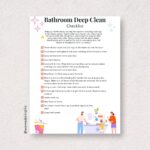
Many children have food intolerances and they can often go undetected. Food intolerances are different to allergies in that they take a while to display symptoms. They can have various different triggers, however some of the most common triggers include lactose, gluten and fructose. This post explains more on some of the symptoms to look out for when diagnosing a food intolerance in a child.
Stomach pain
A common symptom of food intolerance is stomach cramps. If your child is regularly complaining that their tummy hurts and does not want to walk long distances or play, it could be a sign that they have an intolerance.
Diarrhoea/constipation
Intolerances don’t just cause cramps, but also often cause digestive issues (i.e. IBS). Some kids experience diarrhoea whenever they eat trigger foods. Other kids experience constipation. It is usually one or the other, although some kids can experience both. If you have a young child who has lots of accidents or often struggles to go to the toilet, consider whether a food intolerance could be the cause.
Bloating
A food intolerance can result in a lot of excess gas, which often results in bloating. If you’ve noticed that your child’s stomach is often very bloated, consider whether they could have an intolerance. Children who experience bloating may also complain that their trousers or pants are too tight at the waist, which can sometimes be mistaken for weight gain.
Headaches/migraines
Many people who experience migraines are triggered by certain foods. A few examples of common triggers include caffeine (kids are most likely to be exposed to this when eating chocolate), citric fruit or certain cheeses. If your child experiences frequent headaches, consider whether they could be caused by a food trigger.
Skin problems
Food allergies are more likely to cause skin problems like hives. However, some people experience flare-ups of skin conditions such as eczema when eating certain foods. Common food triggers include milk, gluten and chocolate. If your child experiences eczema and you haven’t yet found the trigger, consider whether it could be a food intolerance.
What to do if you suspect your child has an intolerance?
To work out if your child has an intolerance, you should try tracking what foods they are eating and then tracking when they experience food intolerance symptoms. If they seem to regularly get symptoms after eating certain foods, you know that this food is a culprit. In some cases, it could be worth getting a doctor or nutritionist’s opinion.
There is much more awareness of intolerances nowadays, and you can find many specialist food products in supermarkets and restaurants that are gluten-free or lactose-free. This includes everything from gluten free bread to lactose free formula for babies. Sticking to these products can prevent your child experiencing future intolerance symptoms.
Websites and apps can help you to track down these products. There are also websites and apps that can provide lactose free and gluten free recipes for kids.


















Leave a Reply